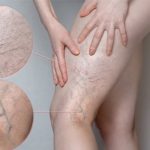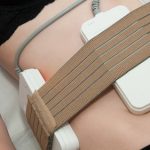FAT TRANSFER
Fat transfer is a minimally invasive cosmetic procedure. It uses your fat to enhance your lips, breasts, butt or other body parts. Fat transfer can provide a plumper, more youthful look and repair scars. Plastic surgeons also perform fat transfer for reconstructive surgery.
What is fat transfer?
Fat transfer surgeries take fat from one part of your body and inject it into another area to help shape your appearance. A plastic surgeon can remove excess fat from any area. Usually, they remove fat from your: Belly, Hips, Thighs.
Does fat transfer have other names?
Yes, fat transfer is also known as: Autologous fat transfer, Fat grafting, Fat injections, Lipofilling.
What happens before fat transfer surgery?
Before fat transfer surgery, you typically receive local anesthesia. You’re awake during the procedure but don’t feel any pain.
You might receive general anesthesia, where you are asleep during the procedure, if: The treated area is larger or You’re having additional cosmetic surgeries at the same time.
What happens during fat transfer surgery?
Fat transfer surgery can take anywhere from an hour to more than four hours. Timing depends on your specific case. For example, lip fat transfer takes about an hour. Breast fat transfer can take between three and four hours.
During fat transfer surgery, your plastic surgeon:
Uses liposuction to remove excess fat from one area of your body.
Purifies the fat.
Injects the fat in tiny droplets into the desired area.
What happens after fat transfer surgery?
After fat transfer surgery, it’s common to experience side effects in both the donor area and treated area. These side effects may include: Bruising, Swelling, Tenderness or soreness.
You may need to wear a compression garment to help with healing and get the best results.
How Is Fat Transfer Done in Iran?
Generally, there are three stages for the fat transfer procedure in Iran: harvesting, purification, and transfer.
During the first stage, as the name signifies, fat is extracted from a part of your body, usually abdomen, thighs, etc. This is done using body jet or lipomatic techniques. The two techniques enable the surgeons to remove fat without being burned so that it can be injected into another area.
Next, the extracted fat is washed and purified, which defines the second stage of the procedure. Finally, the processed fat is carefully injected into the site of the augmentation using specially-designed needles.
Fat removal lasts around 1-2 hours, while fat injection lasts around 30 minutes to 1 hour. So, the whole procedure can take from 1 to 3 hours, depending on the fat amount. In some cases, the procedure might need to be repeated several times in order to obtain the desired results.
What are the benefits of fat transfer?
Fat transfer has various benefits because you’re using your tissue versus an implant:
Your results look more natural,
It reduces the chances of having an allergic reaction since it’s not a foreign substance.
Other fat transfer benefits include:
It’s an outpatient procedure, so you go home the same day.
You can plump up smaller parts of the body, like hands and acne scars.
What are the risks of fat transfer?
Risks of fat transfer may include:
Bleeding, Fat that gets stuck in a vein and goes to your lung (fat embolism), Fluid buildup under your skin (seroma), Most fat cells not surviving, Significant scarring, Undesirable results.
Different Types of Fat Transfer Procedures
As you may already be aware, fat transfer surgery can be done for a variety of purposes. Some people may undergo a fat transfer to their face in order to rejuvenate their sagging skin. Some may opt for this treatment to augment/enlarge their breasts or to lift their buttocks. Accordingly, there are different types of fat transfer procedures, which are described below.
Facial fat transfer: Facial fat transfer or fat grafting on face addresses facial creases (wrinkles), such as laugh lines, smile lines, and crow’s feet. In this surgery, the required fat can be extracted from a number of sites in the patient’s body, namely abdomen, and thighs. Then it would be injected into the face. Acne scars, sunken areas of the face, lips, and cheeks are also among treatable areas by this procedure.
Breast implants along with fat grafting: This happens when breasts are in need of reshaping. Fat injection is applied during breast implant surgery. In case one is left with a number of breast irregularities after the breast augmentation surgery (implants), those irregularities can be tackled through fat injection. The procedure yields its result as a refined and reshaped breast which most definitely would please the patient.
Fat transfer breast lift/augmentation: Are you one of those who desire bigger, shapelier breasts? If yes, you had better read this part quite carefully. Those who desire an increase in their breast size make for perfect candidates for this type of procedure. In this procedure, the fat is injected into the patient’s breasts. It is required that the prospective patient have an already shapely breast with good skin tone. On the other hand, those women with saggy breasts and poor skin and those who wish for a significant increase in the size of their breast would not benefit from this kind of treatment.
Fat grafting for patients with breast cancer: Breast cancer patients who have had a procedure called lumpectomy (a treatment which leaves the patient with breast deformity) can greatly benefit from this method. The said method fills in the areas in the surgical site, leaving the patient with less noticeable irregularity in the breasts. Fat transfer can also be employed for total breast reconstructions where a fundamental augmentation of the breast size is intended. However, it should be kept in mind that in order to achieve the desirable effects, the procedure has to be repeated a couple of time or even more.
Fat transfer to the buttocks and hips: This procedure is for those who desire more prominent and rounded lower body including the buttocks hips. While some might opt for an implant to achieve such a result, others prefer a fat grafting procedure on their buttocks to look more curvaceous. Butt lift with fat transfer is commonly known as ‘Brazilian butt lift‘.
Hand rejuvenation with fat injection: This last category has to do with adding the desired volume to one’s hands. However, that is not the only occasion when such a procedure is employed. Treating wrinkled areas, covering underlying vessels and tendons and improving the quality of the skin can be cited as other items requiring a hand rejuvenation surgery using fat grafting.
What is the recovery time for fat transfer surgery?
Your recovery time depends on the location of the fat transfer. It can take up to several weeks for some side effects, such as swelling, to subside.
When can I return to work or my usual activities?
Some people can return to work and regular activities after a week, while others need two weeks or more. Talk to your plastic surgeon about recovery and what to expect for your specific fat transfer procedure.
Cost of Fat Transfer in Iran
The cost of fat transfer depends on the fat amount which needs to be removed and injected. In Iran, fat extraction (which is done by either body jet or lipomatic) would cost from around $1,000 to $2,000 per area.
As can be seen, fat grafting in Iran cost far less than it does in most other countries. For instance, in the UK, fat transfer surgery costs between $2,000 to $7,000 per area. In the US, the average cost of a breast fat transfer is $6,000, while the average cost of a buttock fat transfer is $8,000.





















